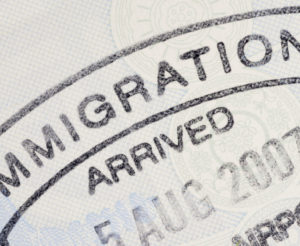Australia’s migrant intake drops to ten-year low
 Australia’s permanent migrant intake has dropped to just 162,417 in the past financial year – the lowest in a decade and ten per cent less than the previous year – according to new figures released to the media.
Australia’s permanent migrant intake has dropped to just 162,417 in the past financial year – the lowest in a decade and ten per cent less than the previous year – according to new figures released to the media.
The reduction, which has been confirmed by the Minister for Home Affairs Peter Dutton in media reports, was the result of a departmental crackdown on visa applications.
Since 2012 Australia has maintained an annual cap of 190,000 permanent migrants, roughly divided into two-thirds skilled work visas and one-third family reunion visas.
But in the past year the home affairs department has issued 12,500 fewer skilled work visas and there was a 15 per cent reduction in family visas last financial year.
Mr Dutton confirmed in the media that the reduction of more than 20,000 migrants and said the intake was the “lowest … we’ve seen since John Howard was prime minister”.
He said the reduction was caused by the department “looking more closely at the applications” that are made to weed out “fraudulent claims” such as migrants overstating their qualifications.
The new figures have emerged after Mr Dutton and former Prime Minister Tony Abbott advocated for a lower migration cap and it has sparked accusations the government has cut migration ‘by the backdoor’.
The results have been criticised by the Migration Council Australia, which has said that a reduction in numbers could slow economic growth
In May, a group of peak bodies, including the Australian Council of Trade Unions and the Australian Industry Group, called for the permanent migration intake to remain at 190,000.
Ai Group chief executive Innes Willox said although the migration intake often falls short of the cap, it was “disappointing” that migration levels had dropped “so significantly below the 2017-18 intake”.
In April the Australian Chamber of Commerce and Industry also accused the government of “reducing the permanent migration intake by backdoor means” by closing off legitimate access to the skills that businesses needs through slow processing and reducing eligible occupations.
Chief Executive of the Migration Council Carla Wilshire said in a recent media interview that the level of migration “has traditionally been a cabinet decision because the migration program is a critical economic leaver of government”.
“Migration affects workforce capacity and business confidence, and the decision to reduce the flow has implications across portfolios, including for the budget bottom line,” she said.
“Dropping the migration numbers has the potential to slow economic growth and undermine business confidence,” Ms Wilshire said.
In February federal treasurer Scott Morrison warned that a reduction of 80,000 migrants – as proposed by Mr Abbott – would cost the federal budget $1bn a year and amount to “cutting off your nose to spite your face”.
Finance minister, Mathias Cormann, has told media that the cap had remained at 190,000 since 2012.
But he said the figure was a ceiling, not a target.
“It really depends on the quality of the applicants, as to whether or not you can reach that cap or you don’t reach that cap,” he said.
“The number is ultimately what it is after all of the criteria have been properly applied and applicants have been properly scrutinised,” Mr Cormann said.
Laurie Nowell
Senior Journalist












